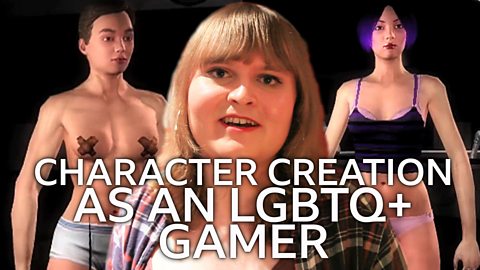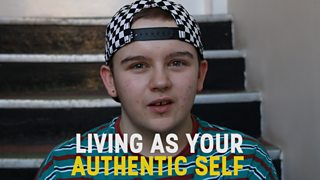I saw my gaming avatar go through gender transition
By Jennifer Heaton | 91热爆 The Social Contributor
From a young age, Jennifer always felt different but it took gaming for her to discover her true identity.
The first time I encountered gender as a choice in a game came when I was seven years old. Pokémon Crystal had just come out, and for the first time you could choose to play as a female trainer. I remember so badly wanting to play as her for reasons I couldn’t explain, but I do remember why I ultimately didn’t: I feared being bullied over it.
I had been made fun of many a time for being girly and emotional, and from an early age it made me question if there was something wrong with me. I wanted so badly just to fit in and avoid ridicule over even the most insignificant things, and so I picked the male trainer.

A few years passed by, and I encountered my first in-depth character creator in Tony Hawk’s Underground 2. This was far more than just a binary choice between boy or girl. Every detail of your avatar’s appearance was customisable to an absurd degree; you could even insert your face into the game using an EyeToy camera.
I had mostly given up on trying to create myself in games.
However, despite having all the tools to literally put myself in the game, I recall feeling overwhelmed and unsure how I envisaged myself.
I wanted to play as myself in the game, but everything I created just felt wrong. All I saw was just some generic pudgy blonde boy with no fashion sense, and it made me think about myself. Am I boring? Is this really all I am? Of course, I could have experimented with creating a female character, but I didn’t dare. What if my friends saw me playing as a girl? The fear of embarrassment stopped me from even trying.

EXPLORING IDENTITY THROUGH CHARACTER CUSTOMISATION
How character customisation in games can help you explore your own identity.
Years of gaming later, mostly spent playing as the homogenous cavalcade of brown-haired, stubble-faced, gruff-voiced male video game protagonists of the 2000s, I had mostly given up on trying to create myself in games. That was until my subconscious feelings about gender came to the forefront whilst playing Saints Row 2.
The 2008 title features still one of the most robust character creators in video games, and that lack of limitation blew my teenage mind. I experimented like crazy with the system, creating all kinds of wacky characters or finding other fans’ creations online.
It was like a whole game in and of itself to me, entirely separated from the Grand Theft Auto meets Fast & Furious nature of the main game.

But what struck me most about Saints Row 2’s customisation suite was the body type slider. Though you still had to pick male or female, this option let you adjust your character’s body shape between masculine, feminine and all variances in between. Without really being able to articulate why, it fascinated me.
Whilst messing around with the system, an idea struck me: what if I started a play through as a male character but, at regular intervals, gradually pushed that slider to the other side?
What initially began as a funny experiment quickly became all too real. As I played, I saw my avatar essentially go through gender transition. With each push of the slider towards the feminine, I shifted the character’s appearance and clothing with it. After many hours of play, that protagonist who first escaped Stilwater Penitentiary as a buff surly street thug was a svelte irreverent fashionista by the time she came face-to-face with the head of the evil Ultor Corporation.

A faint lightbulb dimmed on in my head that day and, very gradually over the course of several years, its light grew brighter and brighter. I had unintentionally just played a game as a trans woman for reasons I couldn’t even fathom, but I knew it made me feel equally wishful and ashamed. It was a gut feeling that felt more real than anything I’d experienced before, but at the same time I knew expressing those feelings in the real world would attract more ridicule and confusion than I could bare.
Playing video games had always been a way for me to escape from the real world, but this game helped me contemplate why I was trying to escape in the first place. It would be close to a decade after first playing Saints Row 2 that I finally came out as a trans woman, but I owe that game and its sequels so much for opening a door for me. It presented me with the freedom to find myself beyond the binary, try on all kinds of different skins, and all without any judgements or expectations.
What began as an innocent goof became a safe space to experiment with who I was and, eventually, I was able to bring that version of myself into reality.
Today, whenever I play a video game with a character creator, I no longer feel self-conscious about who I play as. I can now, with pride and determination, truly play as myself.




